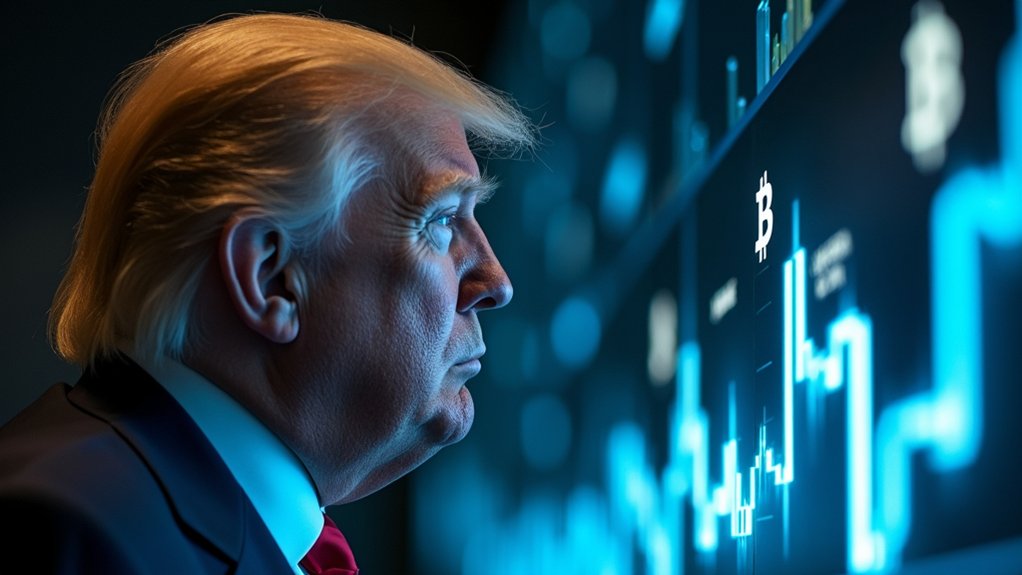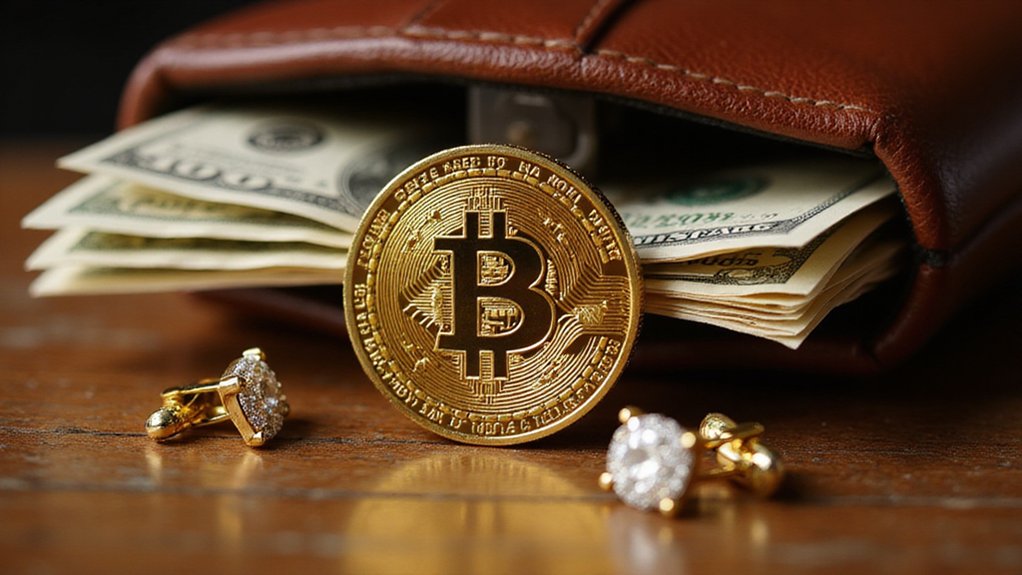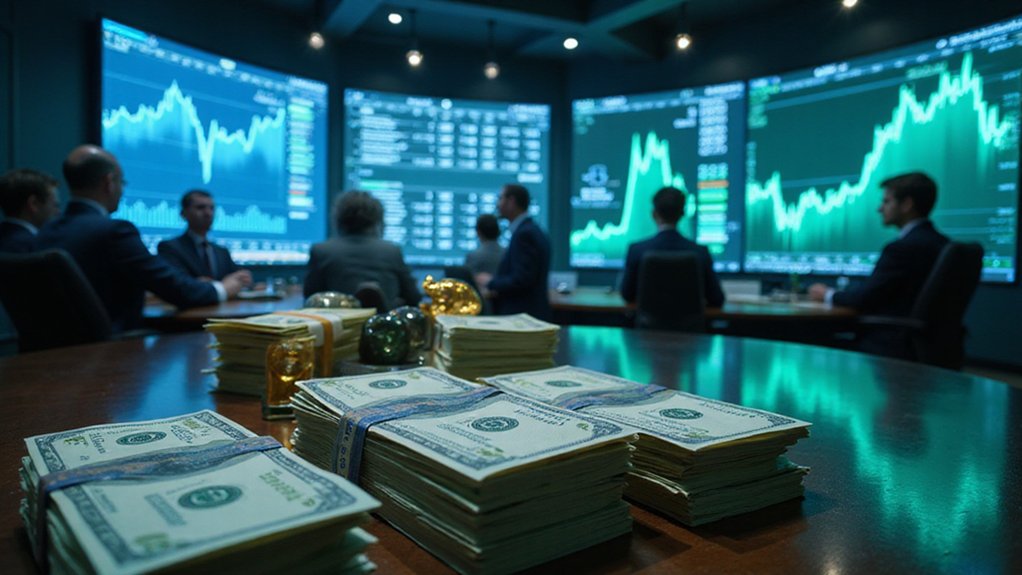How does a real estate mogul turned president pivot from golden towers to digital tokens?
The Trump family’s financial portfolio now reflects a remarkable metamorphosis, with cryptocurrency holdings comprising nearly 40% of their net worth—a $2.9 billion windfall from virtual assets that didn’t exist two decades ago.
The transformation centers on World Liberty Financial, a crypto exchange launched in October 2024 that has attracted $2 billion in planned investment from Abu Dhabi-backed firm MGX for stablecoin development.
This isn’t merely dabbling in digital assets; it represents a thorough ecosystem encompassing meme coins ($TRUMP and $MELANIA), NFTs, and a $550 million DeFi platform that would make traditional Wall Street executives question their career choices.
Trump Media & Technology Group’s $2.5 billion bitcoin acquisition initiative demonstrates institutional-level commitment to cryptocurrency accumulation.
The strategy extends beyond personal enrichment—executive orders now support responsible digital asset growth while a working group chaired by David Sacks develops thorough crypto policies.
The regulatory rollback from previous administration restrictions creates a framework that conveniently aligns with the family’s financial interests.
The meme coin phenomenon particularly illustrates cryptocurrency’s capacity for generating wealth from cultural zeitgeist.
These speculative tokens, launched before Inauguration Day, capitalize on political brand recognition while contributing to broader market fluctuations through significant investments and regulatory actions.
Meme coins like these demonstrate how internet jokes can be transformed into valuable digital assets despite lacking substantive technological innovation.
Bitcoin’s nearly 60% surge since Trump’s November election victory demonstrates the market’s confidence in pro-crypto policies.
Critics raise legitimate concerns about potential conflicts of interest when regulatory influence intersects with personal financial stakes.
Ethics monitors and progressive groups question the wisdom of crypto policy formulation by individuals heavily invested in the industry’s success.
Yet supporters argue this alignment guarantees informed decision-making from stakeholders genuinely committed to sector growth.
The administration has paused investigations into a dozen crypto companies while simultaneously issuing executive orders to promote digital currencies.
The empire’s expansion into Bitcoin mining operations, cryptocurrency ETFs, and stablecoin development (including USD1 for Binance investment) represents diversification across multiple crypto verticals.
Foreign investment attraction, potential job creation, and industry growth demonstrate measurable economic impact beyond personal wealth accumulation.
Whether this digital pivot represents visionary entrepreneurship or opportunistic exploitation remains debatable.
What’s undeniable is the successful conversion of political capital into cryptocurrency holdings—transforming virtual nothingness into substantial wealth through strategic positioning at the intersection of regulation and innovation.







